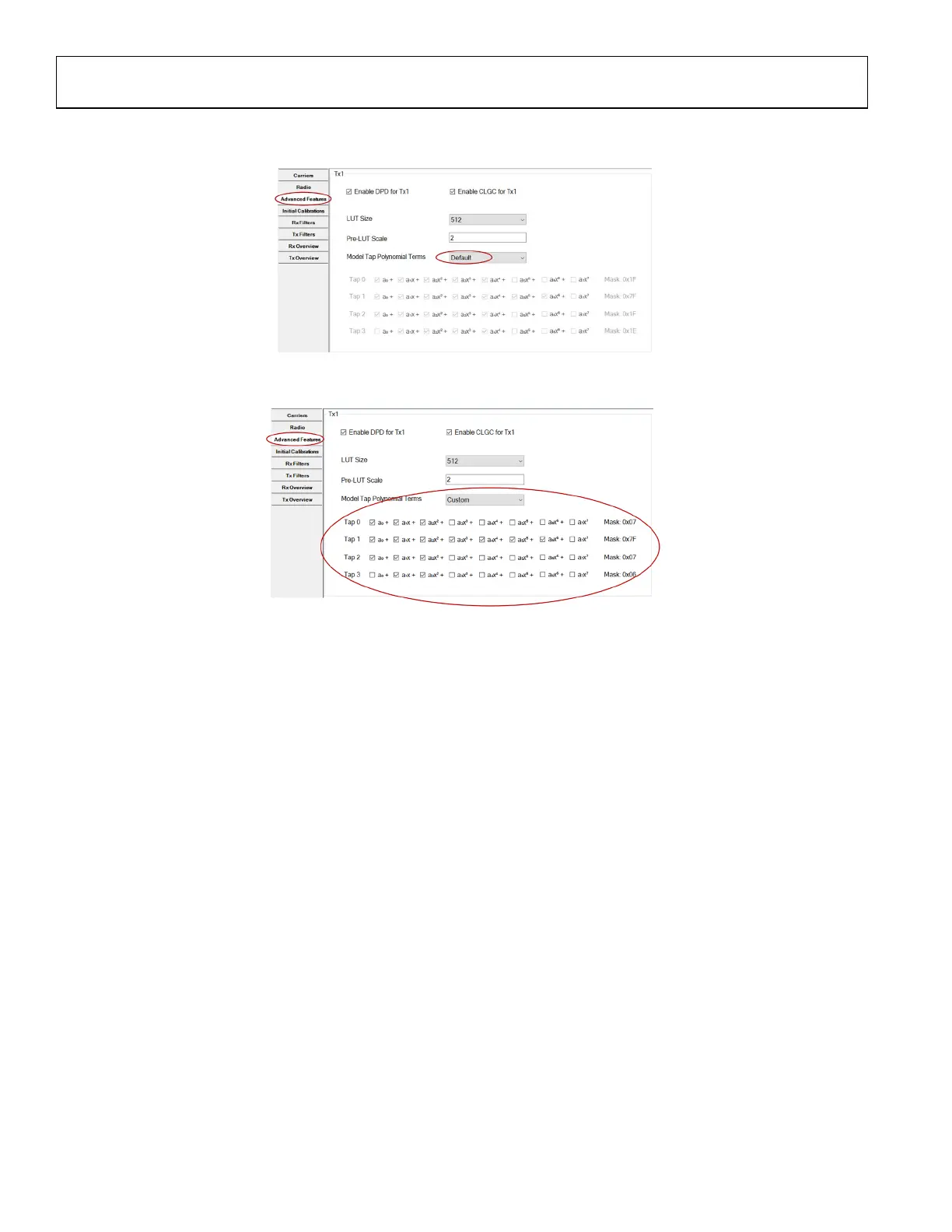UG-1828 Preliminary Technical Data
Rev. PrB | Page 206 of 277
Tx1 OR Tx2
OUTPUT STAGE
C
B
L
C
L
C
1.8V
1.8V
1.8V
C
C
C
C
24159-171
Tx1–/Tx2–
Tx1+/Tx2+
Figure 199. ADRV9001 RF Transmitter Interface Configuration B
Tx1 OR Tx2
OUTPUT STAGE
L
C
L
C
1.8V
1.8V
1.8V
C
B
24159-172
Tx1–/Tx2–
Tx1+/Tx2+
Figure 200. ADRV9001 RF Transmitter Interface Configuration C
Tx1 OR Tx2
OUTPUT STAGE
C
B
L
C
L
C
1.8V
1.8V
1.8V
C
C
C
C
DRIVER
AMPLIFIER
24159-173
Tx1–/Tx2–
Tx1+/Tx2+
Figure 201. ADRV9001 RF Transmitter Interface Configuration D
If a Tx balun is selected that requires a set of external dc bias chokes, careful planning is required. It is necessary to find the optimum
compromise between the choke physical size, choke dc resistance (RDCR) and the balun low frequency insertion loss. In commercially
available dc bias chokes, resistance decreases as size increases. However, as choke inductance increases, resistance increases. Therefore, it
is undesirable to use physically small chokes with high inductance as they exhibit the greatest resistance. For example: the voltage drop of
a 500 nH, 0603 choke at 100 mA is roughly 50 mV.
Table 90. Sample Wire-Wound DC Bias Choke Resistance vs. Size vs. Inductance
Inductance (nH) Resistance (Size: 0603) Resistance (Size: 1206)
100 0.10 0.08
200 0.15 0.10
300 0.16 0.12
400 0.28 0.14
500 0.45 0.15
600 0.52 0.20
When selecting a dc bias choke inductor, shunting impedance of the choke inductor would must be high for TX frequency band in order
to minimize its loading to outputs . Therefore, the self resonant frequency of the selected choke inductor must be higher than intended
TX frequency.

